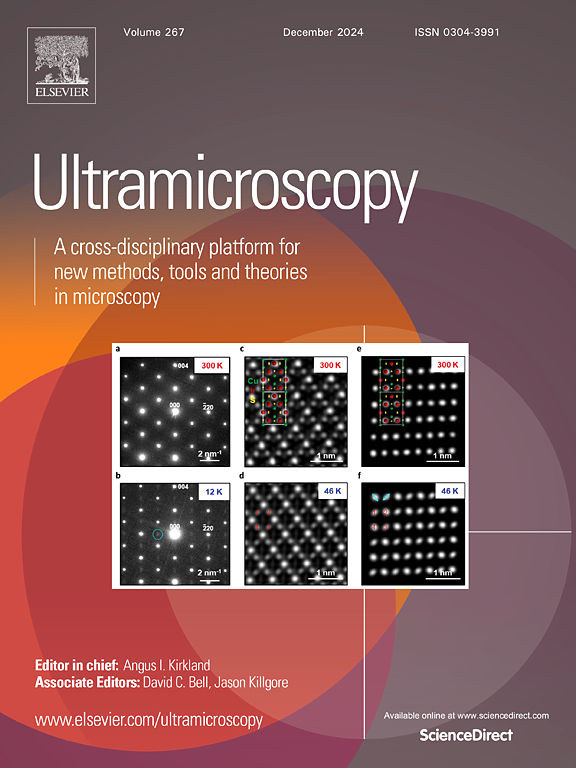开发超快四维前驱电子衍射。
IF 2.1
3区 工程技术
Q2 MICROSCOPY
引用次数: 0
摘要
超快电子衍射/显微技术使我们能够在飞秒-纳秒时域内研究晶体结构的非平衡动力学。然而,电子衍射强度通常对激发误差(即偏离布拉格条件)和动力学效应极为敏感,这阻碍了我们定量讨论晶体结构动力学,尤其是厚样品中的晶体结构动力学。在这里,我们开发了一种四维前驱电子衍射(4D-PED)系统,通过它可以记录电子衍射图案(qx,qy)的时间(t)和电子入射角(j)相关性。VTe2 的非平衡晶体结构细化表明,晶体结构的超快变化可以通过 4D-PED 进行定量测定。我们还进一步分析了 ϕ 的相关性,从中可以定性地估计出平行于光轴的倒易点阵矢量的变化。这些结果表明了 4D-PED 方法在定量研究超快晶体结构动力学方面的能力。本文章由计算机程序翻译,如有差异,请以英文原文为准。
Development of ultrafast four-dimensional precession electron diffraction
Ultrafast electron diffraction/microscopy technique enables us to investigate the nonequilibrium dynamics of crystal structures in the femtosecond-nanosecond time domain. However, the electron diffraction intensities are in general extremely sensitive to the excitation errors (i.e., deviation from the Bragg condition) and the dynamical effects, which had prevented us from quantitatively discussing the crystal structure dynamics particularly in thick samples. Here, we develop a four-dimensional precession electron diffraction (4D-PED) system by which time (t) and electron-incident-angle dependences of electron diffraction patterns are recorded. Nonequilibrium crystal structure refinement on VTe2 demonstrates that the ultrafast change in the crystal structure can be quantitatively determined from 4D-PED. We further perform the analysis of the dependence, from which we can qualitatively estimate the change in the reciprocal lattice vector parallel to the optical axis. These results show the capability of the 4D-PED method for the quantitative investigation of ultrafast crystal structural dynamics.
求助全文
通过发布文献求助,成功后即可免费获取论文全文。
去求助
来源期刊

Ultramicroscopy
工程技术-显微镜技术
CiteScore
4.60
自引率
13.60%
发文量
117
审稿时长
5.3 months
期刊介绍:
Ultramicroscopy is an established journal that provides a forum for the publication of original research papers, invited reviews and rapid communications. The scope of Ultramicroscopy is to describe advances in instrumentation, methods and theory related to all modes of microscopical imaging, diffraction and spectroscopy in the life and physical sciences.
 求助内容:
求助内容: 应助结果提醒方式:
应助结果提醒方式:


